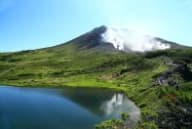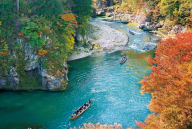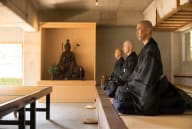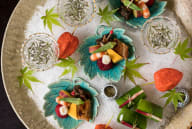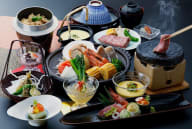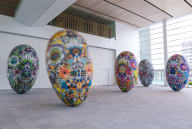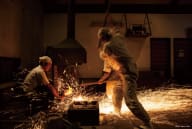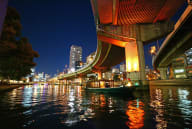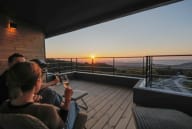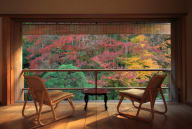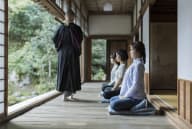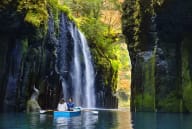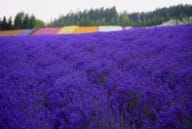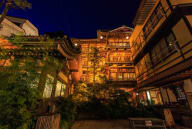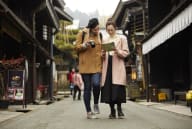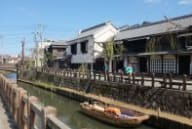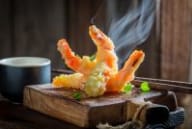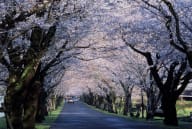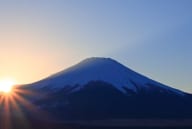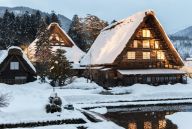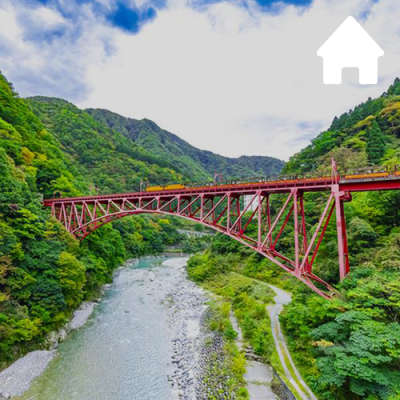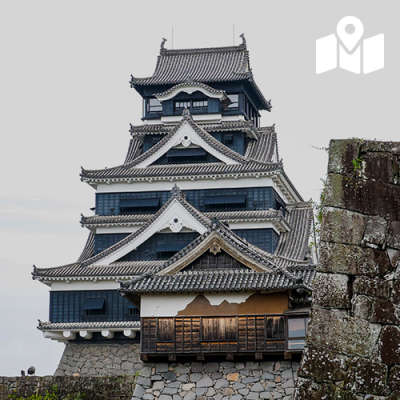Use the
Planning a Trip to Japan?
Share your travel photos with us by hashtagging your images with #visitjapanjp
Across the Kansai and Chugoku regions, traditions and spiritual values have been passed down in an unbroken stream, nurturing people’s lives and still empowering them today. Encounter the Buddhist roots of Japanese culture at Nara’s ancient temples; feel the depth of the performing art of Noh; and witness the pinnacle of earth and fire in Bizen ware. As you meet the many forms of life that flourish in each locale, you will sense the strength sustained for centuries by Japanese wisdom and prayer.
Local Insight
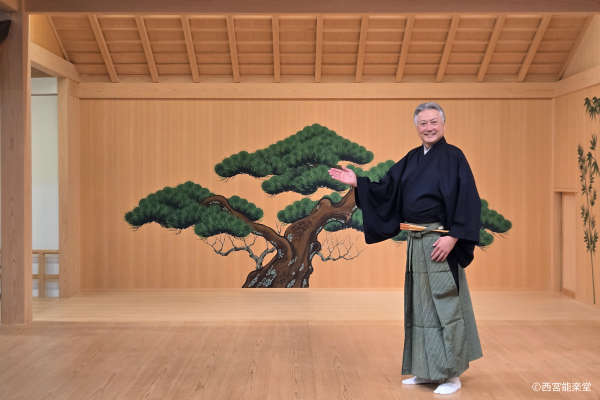
We asked Motonori Umewaka—an Important Intangible Cultural Property holder and Representative Director of the Japan Traditional Arts & Cultures Foundation who organizes the Noh & SDGs discovery experience tour, to share his insights.
Q. What makes this tour special?
Noh is one of the world’s oldest living stage arts, performed without interruption for nearly seven centuries and honored as Japan’s first UNESCO Intangible Cultural Heritage. At Nishinomiya Noh Theater, guests step onto an authentic cypress stage, slip into white tabi socks, and learn the essentials—slow sliding steps, the rhythm of the instruments, even how a mask feels against the skin. You also handle real robes that have seen decades of use, so their weight and texture speak for themselves. The session ends with an excerpt from the play Funabenkei, followed by a tasting flight of three sakes from the local Ozeki brewery—or three Japanese teas if you prefer a non-alcoholic pairing.
Q. What is the wider appeal of Nishinomiya and the Hanshin area?
Nishinomiya sits between Osaka and Kobe in a district known as Hanshinkan, famous for the five Nada Gogo sake villages. Pure mineral-rich Miyamizu water filters down from Mt. Rokko, giving the region’s brewers one quarter of Japan’s total sake production. The same merchant families who made that sake wealth fostered art and architecture, creating what scholars now call Hanshinkan Modernism—a mix of Japanese tradition and early twentieth-century Western design. Strolling quiet residential streets you will pass villas, chapels, and buildings designed by Frank Lloyd Wright, all far from big-city crowds. It is an easy hop by train from Osaka or Kobe, yet the mood is calm and spacious.
Q. How does the tour echo EXPO 2025’s theme: “Empowering Lives”?
Noh has practiced circular economy principles since the Muromachi period. Tsukurimono props are built, taken apart, and rebuilt for the next play. Fans are constantly repurposed. Costumes last for generations, carefully maintained for 50 to 100 years rather than being replaced. By keeping stage sets and lighting to an absolute minimum and relying on the audience’s imagination, Noh creates rich expression from limited resources. This sustainability mindset, deeply rooted in Japanese culture, resonates perfectly with EXPO 2025’s theme.
DAY 1
Osaka

DAY 2
Ancient Culture of Japan
Nara
Take a one-day rail trip from Osaka to Nara—the ancient capital whose history predates even Kyoto. Founded in the 7th century, Horyu-ji is believed to contain the world’s oldest surviving wooden structures. Beyond its celebrated Kondo Hall and Five-storied Pagoda, the temple preserves an exceptional trove of Buddhist art, much of it designated National Treasure or Important Cultural Property. Wander at leisure and let the weight of 1,400 years settle in.
In the afternoon, join a cultural-experience tour at nearby Kichidenji Temple, a venerable temple where you can practice calligraphy, whisk matcha, and even strike a wooden mokugyo fish drum while chanting sutras—an uncommon, hands-on glimpse of living temple culture.

Calligraphy workshop—practice characters, then paint your favorite on a paper fan to keep as a souvenir.
DAY 3
Noh Immersion & Himeji Castle
Hyogo
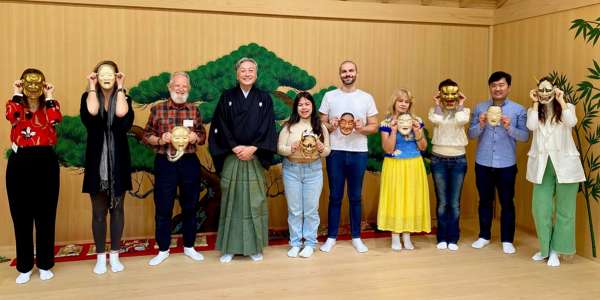
A full 120-minute program—after watching Noh, step onto the cypress-scented stage to practice the suri-ashi glide and try on masks and costumes.

Himeji Castle—designated in 1993 (with Horyuji Temple) as one of Japan’s first UNESCO World Heritage sites and hailed worldwide as a wooden-architecture masterpiece.
Travel onward by train to Hyogo Prefecture and join an immersive tour that engages all five senses with UNESCO-listed Noh—a classical Japanese masked drama. You’ll discover how natural materials are used for stage props, see how costumes are reused, and learn the meaning behind each gesture and garment through both watching and trying them yourself. A tasting of local sake rounds out the experience, letting you savor both the art form and the region’s culture.
Next, stand before National Treasure Himeji Castle, among Japan’s most celebrated fortresses. More than four centuries after its completion, the tower group and surrounding structures remain superbly preserved, offering a priceless look at Japan’s unique castle design. Be sure to admire not only the soaring main keep but also the elegantly unified white walls.
DAY 4
Bizen Ware Pottery Experience
Okayama
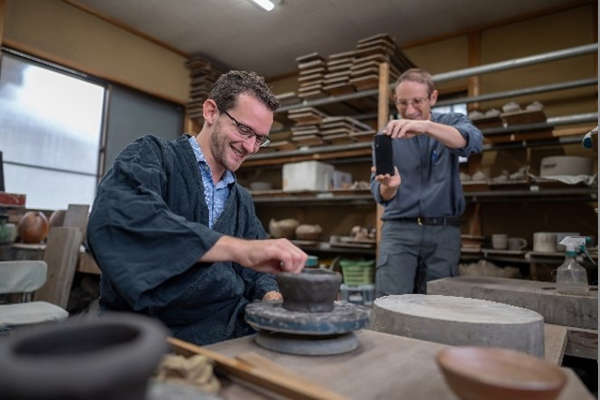
With a history of over a thousand years, Bizen ware invites focused handwork that lets you meet yourself anew at the wheel.
Continue west into Okayama Prefecture.
At Imbe, birthplace of Bizen ware—one of Japan’s Six Ancient Kilns—a specialist guide leads a two-hour walk around the station area, where workshops and galleries line every street. Watch a potter give a live wheel demonstration, then step up to the wheel yourself for a hands-on taste of the craft.
After lunch, travel on to the Kurashiki Bikan Historical Quarter, Okayama’s most beloved heritage area, welcoming more than three million visitors each year. White-plastered storehouses, willow-draped canals, and rows of tile-roofed townhouses create a picture-perfect scene made for exploring on foot.
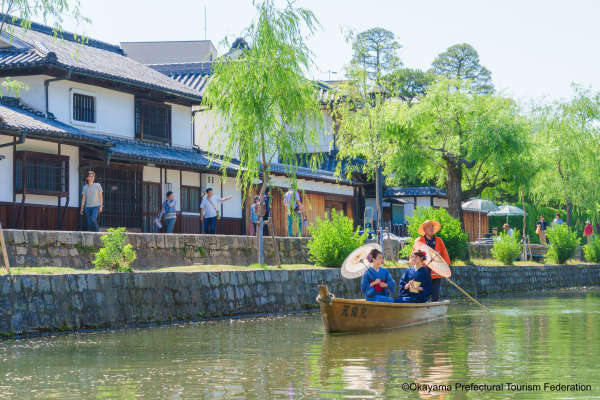
Glide past white storehouses and willow trees to enjoy Kurashiki’s classic townscape from the water.
















